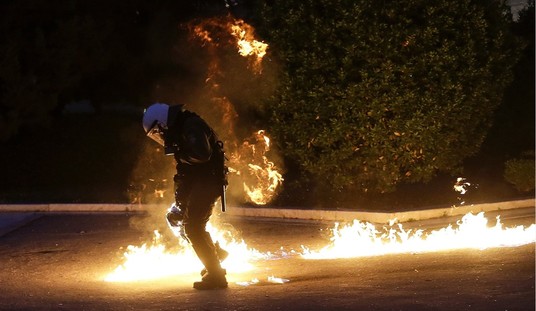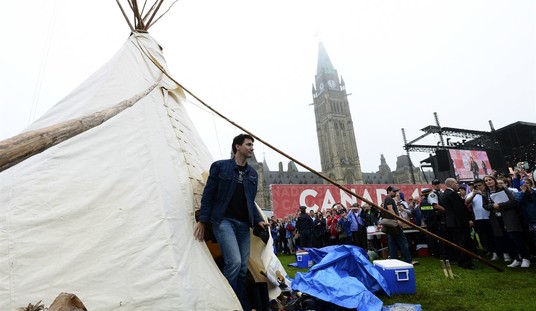For George Lucas, Star Wars becoming The Film That Changed Hollywood was the equivalent of winning the lottery, only with much, much more money involved than what a state typically pays out from a ticket bought at the convenience store. While he was shooting Star Wars, he thought he was producing the equivalent of the live action family movies that Disney was producing in the years between Walt’s death and the launch of Touchstone Pictures, their more adult division. Given a budget of ten million dollars by 20th Century Fox, Lucas thought he’d be lucky if his film made $20 million back.
Once Star Wars hit movie screens in the summer of 1977 and quickly became the highest grossing film Hollywood had, up to then, seen, it officially had to be all things to all people. It was analyzed over its religious message and mysticism. The implications of its technology. And of course, Lucas began being routinely castigated for the film’s all-white casting, with the exception of James Earl Jones’ iconic voice-over work, which was added in post-production. But while he was prepping the film, Lucas had briefly considered casting legendary Japanese actor Toshiro Mifune to play the wizened Samurai-like Obi-Wan Kenobi, and black actor Glynn Turman to play Han Solo. Regarding the latter casting choice, Lucas told one interviewer, “I didn’t want to make Guess Who’s Coming to Dinner at that point, so I sort of backed off.”
When Star Wars began to print money, complaints began to appear from time to time from blacks calling Lucas’s movie racist. It was around that time that Richard Pryor had a stand-up routine about Logan’s Run, another science fiction film released only a couple of years earlier, with an all-white cast. (Again, except for a character – a robot this time, rather than a masked man – overdubbed in post-production by another black actor, the mellifluous Roscoe Lee Browne.) Pryor quipped:
They had a movie of the future called Logan’s Run. There ain’t no n*****s in it.
I said, “Well, white folks ain’t planning for us to be here. That’s why we got to make movies.
It was easy to transfer Pryor’s riff to a much more successful science fiction film, and as I recall at the time, a few critics did just that. In 1983, Lucas’s early biographer Dale Pollock wrote Skywalking: The Life and Films of George Lucas. It hit the streets when Lucas was at the height of his powers – coming off an amazing run of hits of films he directed or produced — American Graffiti, Star Wars, The Empire Strikes Back, and Raiders of the Lost Ark — and just before taint of the Ewoks began to slowly tarnish his image as a monster hitmaker. As a result of such complaints from critics about the lack of black roles in Star Wars, Pollock wrote of Lucas:
The most sensitive part to cast in Empire was Lando. Still smarting from criticism that Star Wars was racist, George conceived of Lando as “a suave, dashing black man in his thirties” and specified in his script that half of the Cloud City residents and troops were to be black (in the actual film, only a few blacks are visible). Lucas sought Billy Dee Williams for the role from the outset, after seeing him in Lady Sings the Blues. Williams was reluctant to play what he thought was a token black, but soon realized that Lando could be portrayed by a black or white actor. “The part requires a universal, international quality, which I have,” Williams says. “Lando is an alternative to the usual WASP hero.”
Lucas says he uses aliens and robots to make (however subtly) a point about discrimination—at one point, R2-D2 and C-3P0 are barred from entering the space cantina. “Chewbacca’s nonhuman and nonwhite,” Lucas says. “I realize it seems rather obscure and abstract, but it was intended to be a statement.” Lucas claims to be a fervent believer in equality. “I get upset over injustice and inequality,” he says. The robots and Chewbacca were there to demonstrate that no matter how odd or different people seem, they can still be true and faithful friends. This is an unusual form of humanism, to be sure, but Lucas says he was trying to make a point. “A lot of problems could diminish if we realized we’re all the same underneath our costumes,” he says.
Lucas also insists that he didn’t cast James Earl Jones as Darth Vader because he saw the character as a black villain—he simply thought Jones had the best voice for the role. “We got attacked in Star Wars because there were no Puerto Ricans in it,” Lucas complains. “I mean, come on — you can’t win.”
And of course, back in 1999 and 2000, numerous film critics called Lucas racist when the character of Jar-Jar Binks debuted in The Phantom Menace, including this author in Salon:
He seemed extraordinarily defensive. I thought I’d phrased the question carefully enough. I went through the checklist in my head. Did I call him Mr. Lucas? Check. Did I studiously avoid suggesting that I thought the film was racist? Check. Did I phrase it in such a way that he wouldn’t feel attacked? Not according to him.
“You hurt my feelings,” he told me privately after the discussion ended. And I suppose that’s a possibility. But Lucas, as he had shown, isn’t willing to extend his viewers the same courtesy.
I assume that he felt attacked. Maybe it was the setting: There were dozens of university students seated before him in rapt attention, eager to learn from him, the George Lucas. And I had burst his bubble — again. Back when “The Phantom Menace” came out last summer, several critics accused Lucas of perpetuating racist stereotypes, particularly with the Gungan character Jar Jar Binks. Joe Morgenstern, writing for the Wall Street Journal, called Binks a “Rastafarian Stepin Fetchit on platform hoofs, crossed annoyingly with Butterfly McQueen.”
Lucas stubbornly dismissed the idea that Jar Jar could be linked to stereotypes of African-American slaves or minstrel characters. “How, in any credible way, could you take an orange amphibian and say that this was a racial stereotype for African-Americans?” he asked.
When I mentioned Jar Jar’s Caribbean patois he simply cut me off. “Just because somebody has an accent doesn’t make them a stereotype of a particular kind of thing.”
And he was right. Accents in and of themselves may not be stereotypical. But it’s the overall image of Jar Jar that smacks of racism. His buffoonery, gait, appearance (one journalist thought his ears were reminiscent of dreadlocks) and word choice all combine to make him offensive. Lucas refused to even entertain the possibility his work might contain such stereotypes.
As Lucas said in the early 1980s, you can’t win.
You still can’t in 2012 — not when studios receive comments like this from Lucas himself, promoting his new film Red Tails:
For those not familiar, the Tuskegee Airmen were a group of black pilots that fought in WWII segregated from white forces.
“It was designed to [look like it was shot] during the war,” Lucas said. “It’s very patriotic, very jingoistic, very old-fashioned, corny, just exactly like Flying Leathernecks, only this one was held up for release from 1942 when it was shot, and I’ve been trying to get it released ever since.”
Lucas told Stewart he’s been working on the film for 23 years. Although paying for it himself, he went to the studios to create the prints, ads, and be responsible for distribution.
“I showed it to all of them and they said, ‘No. We don’t know how to market a movie like this.’”
When Stewart asked why, Lucas first responded, “Because it’s not green enough. They only release green movies.”
The filmmaker clarified, “It’s because it’s an all black movie. There’s no major white roles in it at all. It’s one of the first all black action pictures ever made.”
You would think Lucas would be sensitive enough to say something like, “Look, I know Hollywood isn’t intentionally racist. I received those same sorts of complaints about my casting choices when I made Star Wars. And I know that HBO already did a small screen version of this story costarring Cuba Gooding, Jr., back in 1995. And I was fortunate to get Cuba for my movie, as well. But this is a story with universal appeal that deserves both a big screen to fully appreciate the flying sequences and the quality of special effects that my crew at Industrial Light & Magic are capable of. So yes, you may have seen this story before. But you haven’t seen it like this.”
But no, because that would relegate Lucas back to the standing he’s maintained with the industry and its critics since Star Wars: a brilliant technician, but not exactly an artiste. So Lucas is left having to play the race card against an industry that’s as exquisitely politically correct as Hollywood. But then, whenever a new film is released, so does at least one newspaper critic it seems. Not to mention dropping the F-Bomb on the few movies made over the past decade designed to appeal to Red State audiences. (And occasionally both within the same review.)
If Hollywood is wondering why it’s seeing headlines along the lines of “Box Office Shocker: Movie Attendance Falls to Lowest Level in 16 Years,” between what the industry itself is saying about its audiences, and what critics are saying about the industry, it need only look at itself. Perhaps when the circular firing squad runs out of bullets, moviegoers will return.
Or not. But if that’s the case, then the industry and those who should be its most fervent supporters have only themselves to blame.
Update: Related thoughts from Jehuda (aka the Rhetorican) at the PJ Lifestyle blog.










Join the conversation as a VIP Member